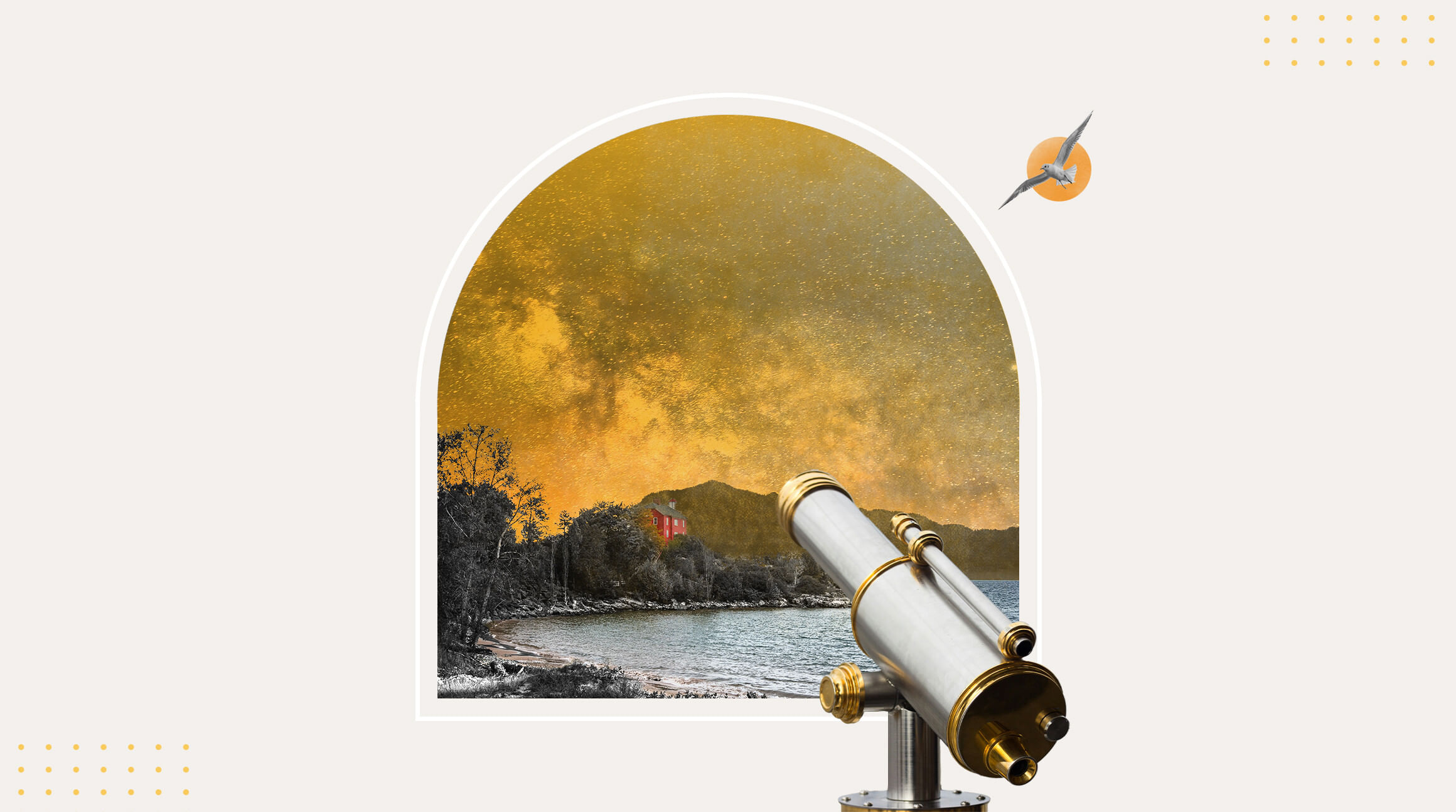
The Best Places for Stargazing in the USA
While we Brits might be accustomed to cloud-covered nights that make even spotting the moon a challenge, our American cousins are blessed with some truly spectacular stargazing opportunities.
And with recent reports of a rising interest in astrotourism among British travellers, the night skies are having a bit of a moment.
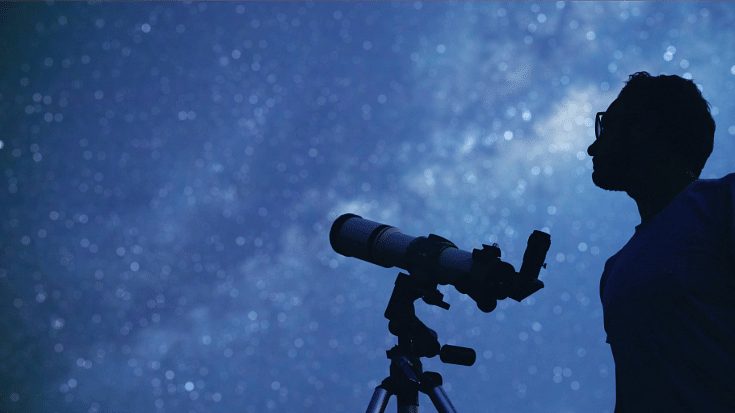
Adobe Free Stock / astrosystem
And with good reason. There's something humbling about standing beneath a canopy of stars, realising just how tiny we are in the grand cosmic scheme.
For many, it's a phenomenon not only worth witnessing close to home, but one for which they'd travel to some of the world's most spectacular stargazing spots.
So, dust off your telescope and start planning your celestial fix as we go on an astronomical tour of America's most magnificent night skies.
Stargazing Hotspots in the Northeast
Cherry Springs State Park, Pennsylvania
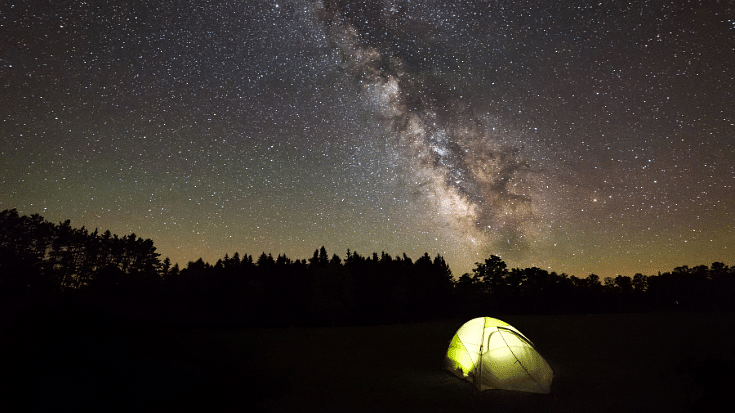
iStock / Michael Ver Sprill
Recognised as one of the darkest places east of the Mississippi River, Cherry Springs State Park in Pennsylvania boasts Bortle Class 2 skies - astronomer-speak for "absolutely brilliant."
The park's 82-acre Astronomy Field sits atop a 2,300-foot mountain, offering 360-degree views of the night sky.
During summer, you might spot up to 30,000 stars with the naked eye, compared to the dozen or so visible from most British cities on a good night.
Anyone making the trip to this spectacular spot can combine it with the sights of the Keystone State.
Maybe you fancy a delving into Pittsburgh's award-winning food scene or the waterfalls, hiking trails and cosy cabins of the Poconos Mountains.
Or, my personal recommendation, why not make your very own montage with a victorious run up the Rocky Steps in Philadelphia?
Katahdin Woods and Waters National Monument, Maine
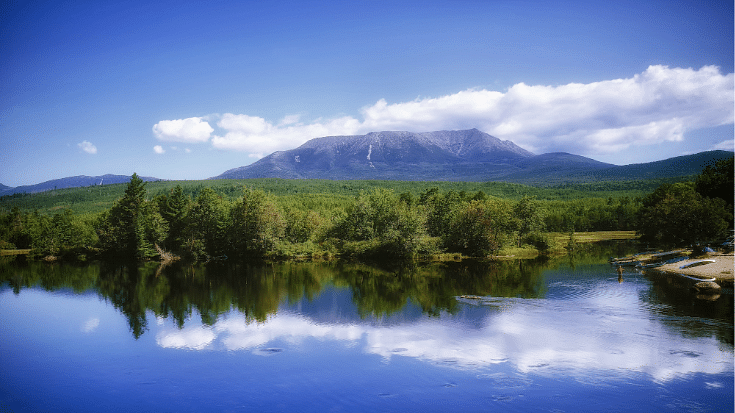
Maine isn't all lobster rolls and Stephen King novels.
Not only is it a haven for adventurers, it's also home to Katahdin Woods and Waters National Monument, a certified Dark Sky Sanctuary.
This 87,500-acre wilderness offers unobstructed views of the Milky Way, planets and even the occasional meteor shower.
The absence of significant light pollution means astronomical objects appear with remarkable clarity.
AMC Maine Woods, Maine
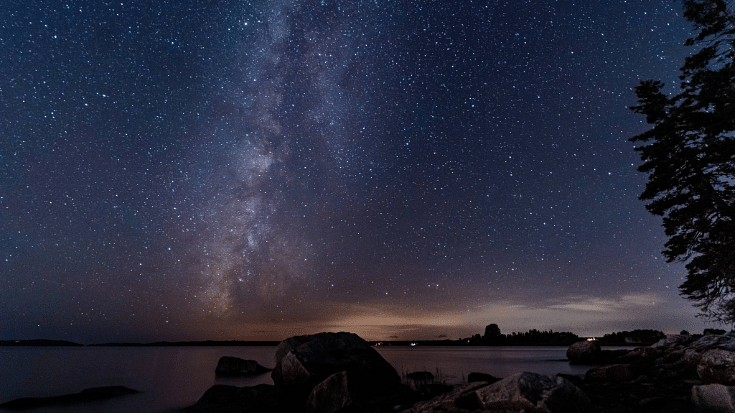
iStock / GabrielPevide
As if Maine hadn't delivered enough celestial action, here's another top stargazing spot in the Pine Tree State.
New England's first International Dark Sky Park covers a vast expanse of undeveloped forestland.
The Appalachian Mountain Club's Maine Woods initiative offers pristine night skies that would impress even the most seasoned astronomer.
Its remote location means there's minimal light pollution, allowing for spectacular views of the expanse above.
Adventurous Brits hitting Maine may also want to spend some time in the renowned Acadia National Park.
With 158 miles of hiking trails, the stunning Cadillac Mountain, aka the highest point on the US Atlantic coast - and scenic routes along the Carriage Roads, they'll be in outdoor heaven.
Stargazing Hotspots in the Midwest
Boundary Waters Canoe Area Wilderness, Minnesota
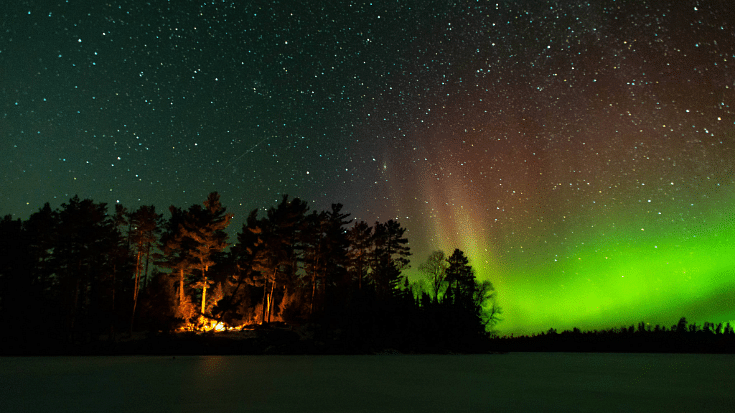
iStock / EyeEm Mobile GmbH
Boundary Waters might sound like a disputed territory from Game of Thrones.
But it's actually one of America's premier stargazing destinations.
This Dark Sky Sanctuary spans over a million acres of wilderness. Here, it's likely the only light around for miles will come from your torch as you fumble with your telescope.
Its numerous lakes create perfect reflecting surfaces for the night sky. Imagine seeing the stars twice, once above and once mirrored below.
It's like getting a two-for-one deal on cosmic splendour.
Keweenaw Dark Sky Park, Michigan

Adobe Free Stock / Sandra J Photography
Keweenaw Dark Sky Park offers spectacular astronomical viewing along Lake Superior's shoreline.
Its northern location makes it an excellent spot for aurora borealis sightings during strong solar activity.
The combination of dark skies and the lake's horizon creates a dramatic backdrop for stargazing.
It's worth braving the Midwestern winter temperatures for a chance to see the northern lights in such a beautiful setting.
Middle Fork River Forest Preserve, Illinois
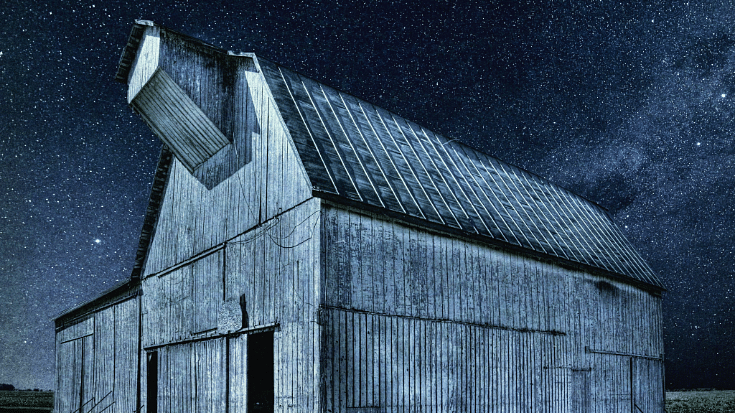
Just a short drive from Chicago - a city whose light pollution could probably be seen from the moon - lies this dark sky oasis.
Middle Fork River Forest Preserve proves that even in America's heartland, you can find respite from light pollution.
The preserve, popular with hikers and campers, is protected for its scientific, natural, educational and cultural heritage.
It also hosts regular stargazing events, making it ideal for astronomy novices.
Newport State Park, Wisconsin

iStock / Morgan Somers
Newport State Park's 2,373 acres of forests and 11 miles of Lake Michigan shoreline provide plenty of scope for stellar stargazing.
The park's dark skies allow for magnificent views of the Milky Way, planets and occasionally, meteor showers.
Just remember to bring insect repellent - the mosquitoes here are said to be relentless.
Once you've seen the stars in Wisconsin, you might want to take advantage of the state's 50 parks for a hiking adventure.
Some top-rated spots include Big Bay State Park with its breathtaking Lake Superior shoreline, High Cliff park for some dramatic limestone cliffs and Willow River for scenic waterfalls.
Voyageurs National Park, Minnesota
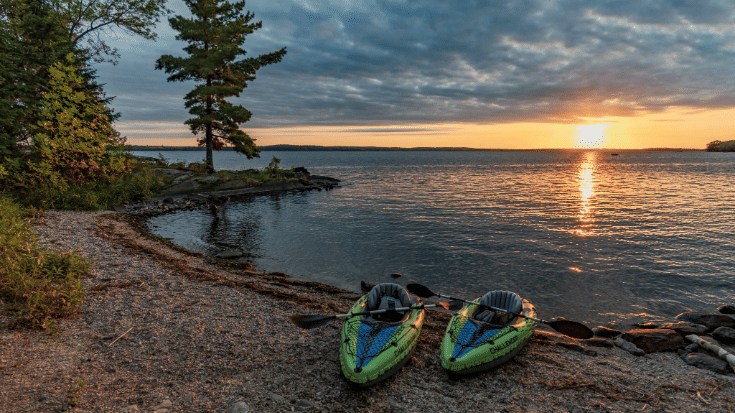
Adobe Free Stock / Matt Hopper
With more than 40% of its area covered by water, Voyageurs National Park offers unique stargazing opportunities.
The park's lakes create stunning reflections of the night sky.
For the ultimate experience, rent a houseboat and spend the night floating beneath the stars.
It's like glamping, but with considerably more chance of seeing a satellite or the International Space Station passing overhead.
Stargazing Hotspots in the West
Capitol Reef National Park, Utah
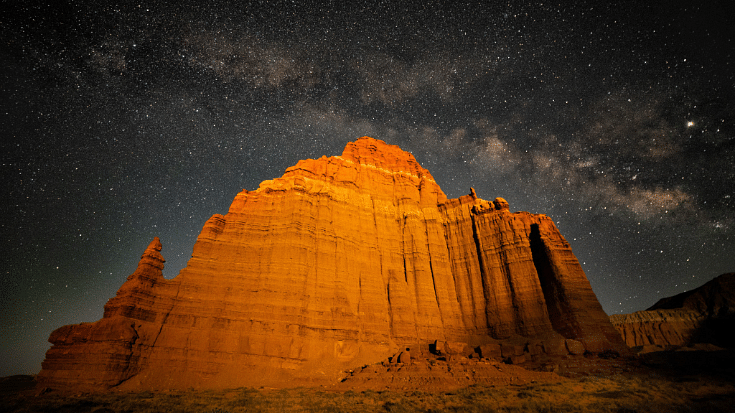
iStock / Bobbushphoto
Utah's dark sky parks are essential pilgrimages for astronomers.
Capitol Reef National Park offers spectacular celestial viewing against a backdrop of red rock formations. They look otherworldly even in daylight.
The park's remote location in south-central Utah ensures minimal light pollution, while its high elevation provides clear, dry air perfect for stargazing.
Contrasting fiery sandstone by day and cool celestial displays by night is nothing short of magical.
Death Valley National Park, California/Nevada

Adobe Free Stock / hpbfotos
Death Valley might not sound like an ideal holiday destination.
Yet this International Dark Sky Park offers some of the darkest skies in the United States.
The park's low humidity and minimal cloud cover make for exceptional astronomical viewing conditions.
Its vast expanses provide unobstructed horizon-to-horizon views.
And to sweeten the deal, you'll be in one of the best areas for the great outdoors in the entire United States.
Great Basin National Park, Nevada
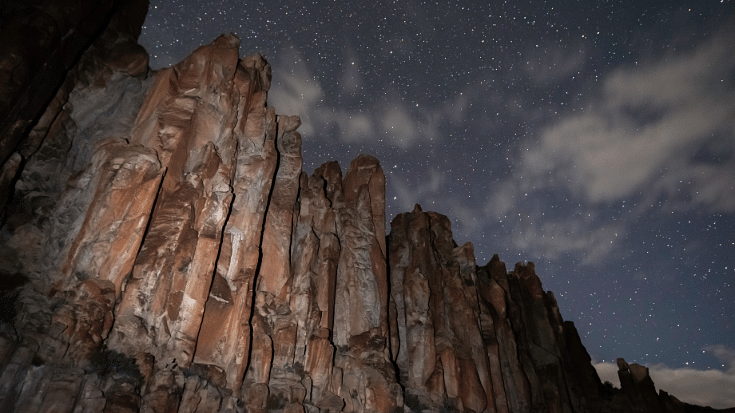
Adobe Free Stock / Dominic Gentilcore
Great Basin National Park might be one of America's least-visited national parks, but that only means more stars for you.
The park's high elevation and dry, clear air create perfect conditions for observing celestial objects.
Afetrwards, a visit to the Ancient Bristlecone Pine Forest may add a touch of terrestrial wonder to your astronomical adventures.
These gnarled trees, some over 4,000 years old, have been watching the stars far longer than any of us.
Mauna Kea, Hawaii

Adobe Free Stock / Yan
Mauna Kea is Hawaii's tallest volcano. Not to worry, though - there's little chance of any lava-related action.
It last erupted somewhere between 4,500 and 6,000 years ago.
Rising 13,803 feet above sea level, its summit is home to several international observatories and is reachable via the largely paved Mauna Kea access road.
But those who attempt it will need a suitably sturdy off-road vehicle, such as a 4x4.
Alternatively, you could opt for a day-long tour with a visit to the information station, its telescopes, dining, sunset views and stargazing after sundown included.
The stargazing here is spectacular. And who would argue with a trip to Hawaii being thrown into the deal?
Stargazing Hotspots in the South
Greater Big Bend International Dark Sky Reserve, Texas

The Milky Way rising over Santa Elena Canyon, Big Bend National Park, Texas / iStock / Tim Speer
Everything's bigger in Texas, including this Dark Sky Reserve - the world's largest, in fact.
Encompassing Big Bend National Park and Big Bend Ranch State Park, this cosmic playground offers truly magnificent stargazing opportunities.
The Chisos Mountains within Big Bend National Park provide elevated viewing points with Bortle Class 1 skies - the darkest designation possible.
Cosmic Campground, New Mexico
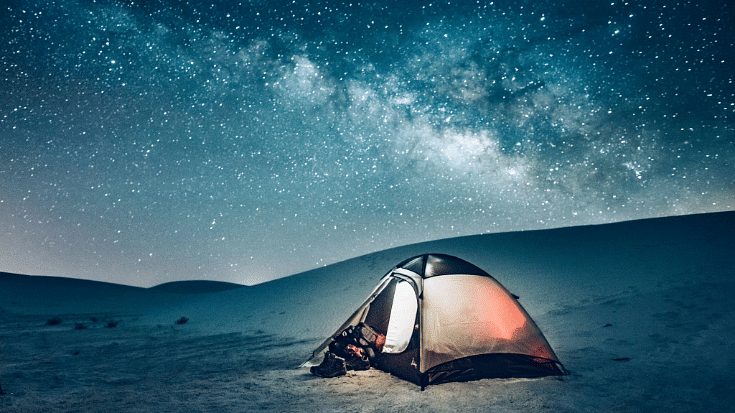
iStock / ferrantraite
If Cosmic Campground sounds like a place star-gazers definitely need to visit, it's because it is.
This International Dark Sky Sanctuary in New Mexico offers unobstructed 360-degree views of the night sky.
Located in the Gila National Forest, it has no permanent outdoor lighting within 40 miles - talk about true seclusion from all things luminous.
This spot is ideal for outdoor minimalists looking to really get up close with nature.
Offering only basic amenities, Cosmic Campground aims to keep visitors' eyes firmly on the prize over their heads.
Pickett CCC Memorial State Park, Tennessee

iStock / Orchidpoet
Tennessee might be known for country music. But at Pickett CC Memorial State Park, stars of a different kind steal the show.
Along with adjacent Pogue Creek Canyon State Natural Area, this park forms one of the darkest spots in the eastern United States.
The park's secluded location on the Cumberland Plateau shields it from major urban light pollution.
On clear nights, the Milky Way stretches across the sky like a celestial highway.
Kissimmee Prairie Preserve, Florida
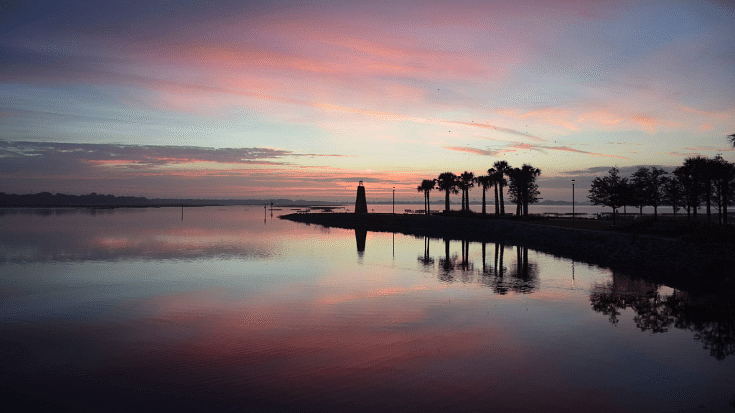
Image by Jim Degerstrom from Pixabay
Florida isn't all theme parks and beaches. Kissimmee Prairie Preserve offers a natural attraction far more ancient than its rivals.
This remote preserve contains the largest remaining tract of Florida dry prairie, providing exceptional dark skies in an otherwise heavily developed state.
Its flat landscape offers unobstructed views in all directions, perfect for spotting constellations overhead.
It's a stellar reminder that sometimes the best entertainment doesn't involve queuing or overpriced snacks.
Practical Tips for Astrotourism in the USA
- Check the lunar calendar - Schedule your visit during a new moon for the darkest possible skies.
- Bring appropriate gear - Pack red-light torches to preserve night vision, warm clothing, even desert locations get cold at night, and some serious insect repellent.
- Download stargazing apps - These can help identify celestial objects. Just be sure to activate night mode to preserve your vision.
- Secure your connectivity - A United States eSIM will ensure you stay connected even in remote locations. Essential for navigation and emergencies.
- Respect dark sky etiquette - Minimise torch usage, avoid headlights where possible and never shine lights upward.
The USA's dark sky locations offer extraordinary opportunities to reconnect with the cosmos. In our increasingly illuminated world, these havens of darkness remind us of our place in the universe - small, but significant.
Stay Connected in the Great Outdoors
Choose your United States eSIM from Airalo, pack your sense of wonder and prepare for astronomical adventures that will leave you starry-eyed long after you've returned home.
FAQs
1. What are the best places for stargazing in the USA?
Top stargazing spots in the USA include Cherry Springs State Park in Pennsylvania, Big Bend National Park in Texas and Death Valley on the California/Nevada border. These locations offer minimal light pollution and excellent visibility.
2. What is astrotourism and why is it popular?
Astrotourism is travel specifically to observe the night sky. It's popular because it offers a chance to disconnect from city lights and reconnect with the cosmos in some of the darkest places on Earth.
3. When is the best time to go stargazing in the US?
Season-wise, the best time for stargazing in the US is winter, due to the colder, clearer air, shorter daylight hours and absence of a bright full moon during the new moon periods.
4. Do I need special equipment for stargazing?
This depends on your personal preference. But many people get by with the basics of a blanket, warm clothes and a red-light torch. Apps like Stellarium can help identify stars and planets. A telescope or binoculars can enhance the experience, but aren't essential.
5. How can I stay connected while stargazing in remote US locations?
Use an eSIM for the USA to get reliable data coverage even in more remote areas. It's a hassle-free way to access maps, weather updates and stargazing apps without relying on public Wi-Fi.



